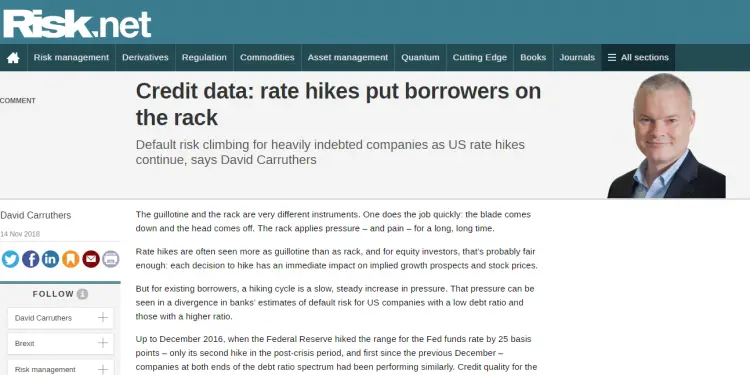The guillotine and the rack are very different instruments. One does the job quickly: the blade comes down and the head comes off. The rack applies pressure – and pain – for a long, long time.
Rate hikes are often seen more as guillotine than as rack, and for equity investors, that’s probably fair enough: each decision to hike has an immediate impact on implied growth prospects and stock prices.
But for existing borrowers, a hiking cycle is a slow, steady increase in pressure. That pressure can be seen in a divergence in banks’ estimates of default risk for US companies with a low debt ratio and those with a higher ratio.
In this series of monthly articles from Risk.net, David Carruthers, head of research at Credit Benchmark, analyses the effect of Fed rate hikes on already heavily indebted US companies. Also covered this month is a comparison of credit risk for UK & EU ex-UK large financials and corporates amidst “Brexit anxiety”. Plus, US Oil & Gas credit trends; and a one-year credit transition matrix for large corporates.
Read the full article using the below link or in the November edition of Risk Magazine.
